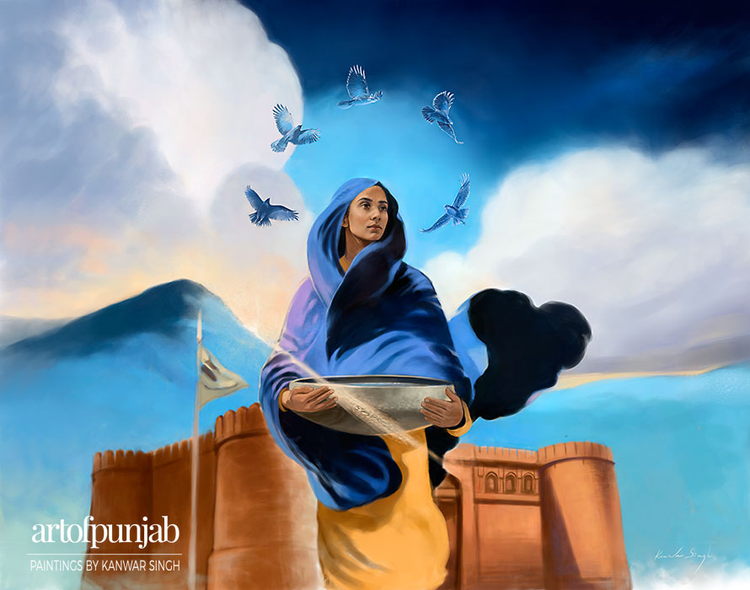-
1499
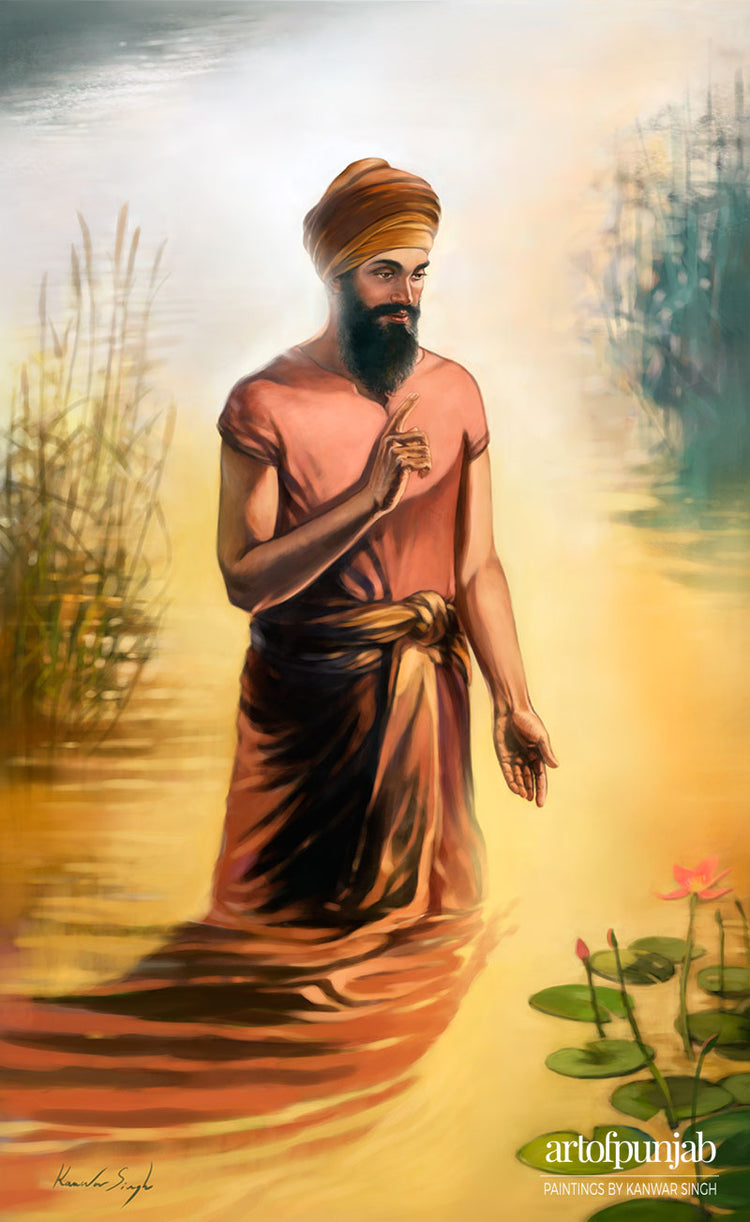
ੴ Ik Onkar
After leaving his birth village of Sabo ki Talwandi, Guru Nanak Sahib moved to Sultanpur Lodhi. It was here that one morning Guru Nanak Sahib disappeared into the dark waters of the Kali Bein rivulet. While in the water Guru Nanak had a deeply mystical experience with the Divine Creator. He was given his mission as Guru by the Divine and revealed some of the most important works of Sikh scripture including Japji Sahib, the foundational prayer of Sikhism. -
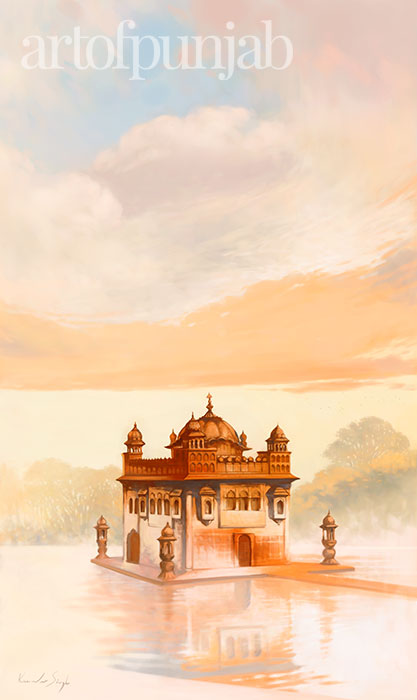
Pillar of Peace
The Harimandir Sahib is the heart of the Sikh Panth. It was conceived by Guru Ram Das ji when he built the sarovar on the site of a holy pool of water in the city of Amritsar, which he also founded. The next master, Guru Arjun completed the Harimandir sahib and installed the Adi Granth, the primal Sikh scriptures, within its walls. Harimandir sahib, in the time of the Gurus was not yet covered in gold but was already revered as the centre of Sikh spiritual life and the seat of the Gurus. Guru Hargobind would have looked across at its’ wondrous forms as he built the Akal Takhat to give Sikhs a place to settle all political and temporal affairs. Later Guru Teg Bahadur ji would sit upon the opposite edge of the sarovar and looked upon its’ four entrances with a pilgrim‘s longing when he was denied entry by the disloyal mahants. Nonetheless, the Sikh sangat of Amritsar still embraced their Guru within its’ view and today a small shrine marks that place on the sarovar in remembrance of their faith. Harimandir sahib has and will forever remain a vision of sanctity and peace within the hearts of every Sikh who lays eyes upon it. -
Vaisakhi 1699
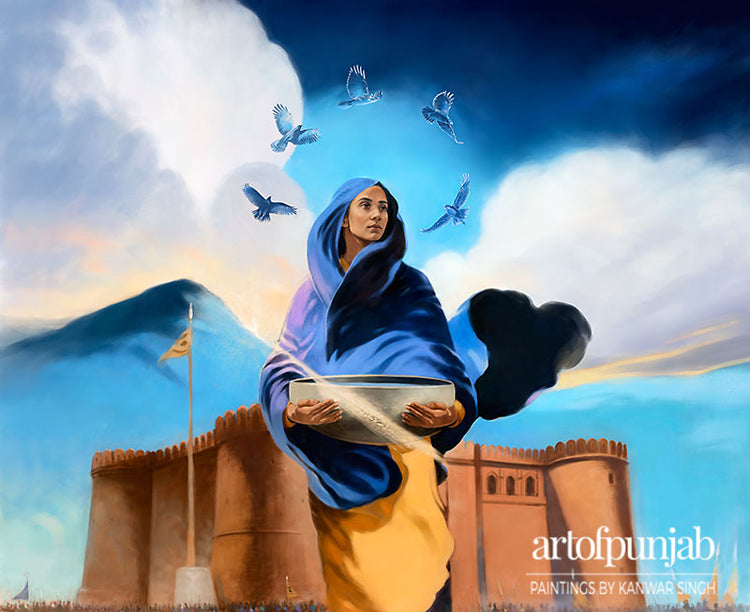
Mata Sahib Kaur - Mother of the Khalsa
Just as Guru Gobind Singh Sahib is considered the father of the Sikh nation, Mata Sahib Devan Kaur is considered its mother. A remarkable young woman, Mata Sahib Kaur was a born leader who took her role as symbolic mother of the Sikhs very seriously. When a Sikh takes Amrit from the 5 Beloved, they are born into the royal house of Nanak. To create an egalitarian society, all Sikhs consider Anandpur Sahib their birthplace and Mata Sahib Kaur their mother. -
1705
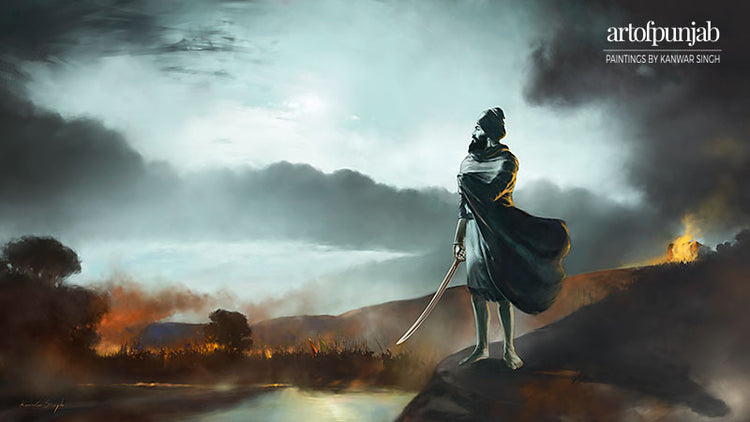
Guru Gobind Singh – The Siege of Chamkaur
The Battle of Chamkaur took place in 1705. Guru Gobind Singh ji, his two elder sons, Baba Ajit Singh and Baba Jujhar Singh alongside a small band of loyal Sikhs, defended the small fort of Chamkaur against a large Mughal force pursuing them. After a long day of Battle, in which many Sikhs including the elder Sahibzadey were martyred, the remaining Sikhs issued Guru Sahib with a Hukam (command) to leave the fort. Guru Sahib did not leave quietly. Instead he stood on high ground and clapped his hands three times, saying, ‘Peer-e-Hind-rwad’ (The ‘Peer’ of India is leaving’). -
First Guru 1469 - 1539
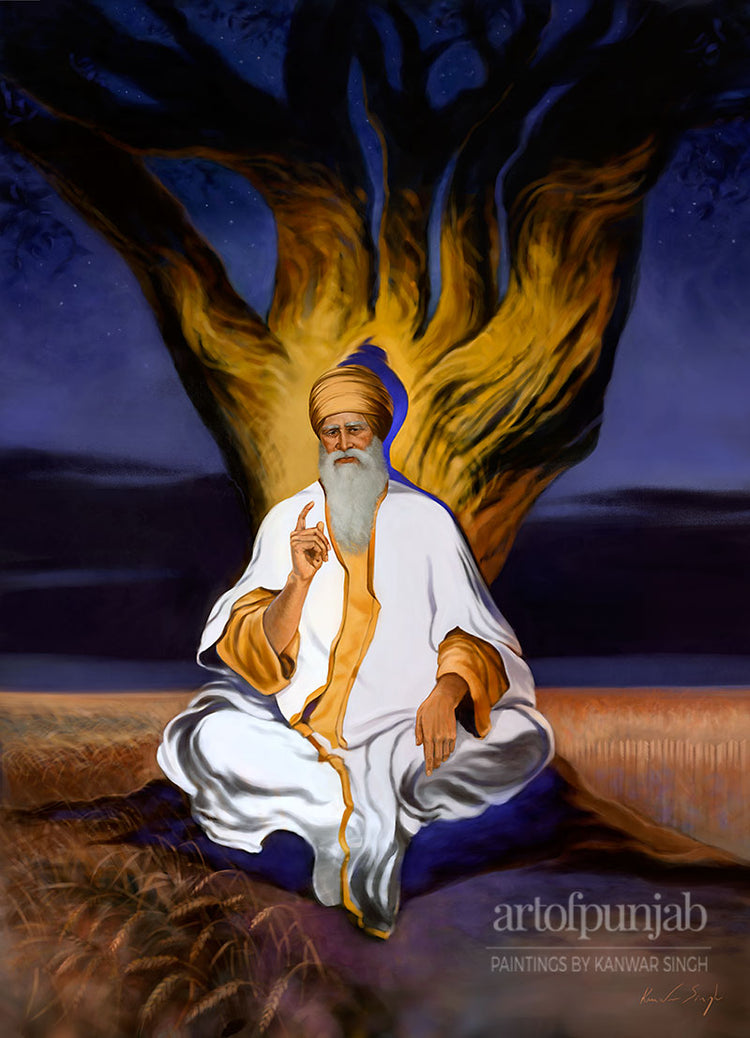
Guru Nanak at Kartarpur
This painting of Guru Nanak at Kartarpur is an artistic attempt to express the divine light manifested by Guru ji in his old age when he attracted many followers to sit alongside him in the wheat fields of Kartarpur. Looking at this art piece, we dwell upon the last days of Guru ji on this earth as he planted the core tenants of Sikhism in the hearts of a community of the faithful who gathered about him. He casts a royal blue shadow, which takes the shape of a warrior wearing a Dastaar and Kalgi. This foreshadows the transformation of their jyot into Guru Gobind Singh ji who would create the Khalsa panth, born out of the soil of Punjab from the seeds Guru Nanak planted generations before. To the left of Guru Nanak, we see the field of golden wheat but to the right it subtly transforms into a landscape of arrows and fire. This is an analogy for the turbulent and transformative times ahead for the land of Punjab, hardships which would engender the spiritual and bodily transformation of the Sikh community into the Khalsa panth. The tree is a metaphor for this community; it grew from the body of the Gurus into five powerful trunks (the panj pyare) and then beyond into countless more spirit born souls, stretching into the eternity of boundless time and the infinite cosmos.

